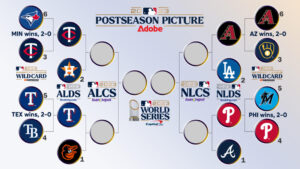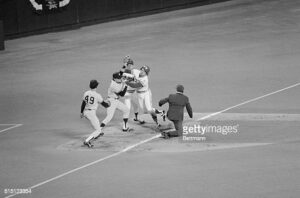Major League Baseball Should Shift Away from the Infield Shift

Oakland A's GM, Billy Beane was an early user of analytics in baseball
By Scott Mandel
Ban the infield shift in Major League baseball, it says here.
And stop the reliance on analytics and statistics.
Numbers can be cool but if they are changing the way the game is played, completely, on both sides of the field, because of how those digits are crunched, they become very uncool. And, disconcerting to a thinking man’s view of the sport.
The good news is, baseball has decided to implement this upcoming season in Double A minor league games a bevy of experimental new rules designed to take the emphasis off of analytics and the push-button style of baseball the dependence on statistical analysis has created. Teams will now be required to “have a minimum of four players on the infield, each of whom must have both feet completely in front of the outer boundary of the infield dirt.” MLB also noted that, based on first-half of this season’s data, it may require teams to position two infielders on either side of second base over the course of the second half of the season.
A lot of the motivation for these experiments are based on the changes in offensive production in the game, at the major league level. League-wide batting averages in 2000 were .260, today, it is .245 with gigantic increases in strike outs. The main reason for the trend towards less hits and baserunners has been analytics. Line drives that used to fall for hits are being caught by defensive players who usually play third base but for certain batters with tendencies to pull pitches to the right of second base, find themselves in right center field or short right field. These shifts have changed the approach of hitters, who are now trying to hit the ball out of the ballpark rather than lay down a bunt down the third base line or hit and easy ground ball to the un-defended shortstop area. They are swinging harder and faster so there may be more home runs but there are many more strikeouts, too.
“Shading” a left-handed pull hitter towards the right side of the field is a much better alternative than moving the entire infield to the right of second base because some analytics-oriented managers discovered certain batters pull curve balls 72% of the time. That kind of push-button managing of the game is making everything more predictable and boring.
We don’t want baseball, a slow game to begin with (but a wonderfully thoughtful game) to be completely predictable. We prefer managers like Billy Martin, who ran each game on instinct and on what his eyes told him on given days. We want players like Willie Mays, who played the game on instinct and on split-second decision-making. Willie liked to shade certain hitters towards left center field or right centerfield, based on who was pitching, how he was throwing on that particular day, how the hitter happened to be swinging the bat, what the weather conditions were, and which umpire was calling balls and strikes that day. If you’re a baseball fan, those are all things to pay attention to, and not to an index card in player’s back pockets. Smart players have been taught how to play the game and don’t need to take out that index card to tell them where to play each hitter or what a certain pitcher will throw on a 3-2 count with a runner on second, from the sixth inning on. Smart fans understand the same things, and that’s precisely what makes the game so interesting, pitch after pitch after pitch.
Take it from this decidedly mediocre math student. Analytics and statistical reliance sucks, but not as badly as geometry and trigonometry sucked, back in the day. Some of us do not want the game of baseball to remind us of our past mediocrity with numbers and shapes. Let’s hope the Lords of Baseball keep the baseball diamond shape intact and don’t turn it into some crazy isosceles triangle.
Baseball fans like their national pastime complicated. Tear up those index cards and keep it a thinking person’s game.




